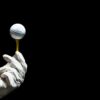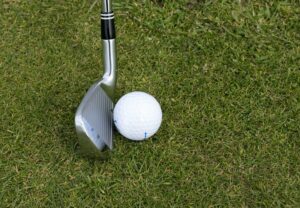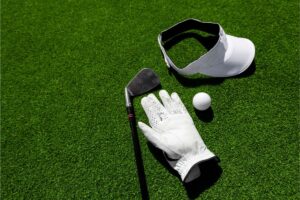For more than 100 years, the Olympics have been a perfect venue to spotlight the world’s top athletes, with one glaring exception: golf.
Every four years, top performers in everything from diving to fencing to pole vault compete for prestige in the form of medals as well as national pride. Regardless of whatever is going on the in world, the Summer and the Winter Olympics do seem to draw us together, for a few weeks at least, to enjoy the spectacle of sports as well root for our country’s competitors.
Except golf.
True, golf has plenty of competitions and tournaments to determine the best of the best, and the top players do get their share of attention, public adulation, and some decent trophies, apparel, and prize money. But enthusiasts of golf history and enthusiasts of Olympic history know that something has been missing on the world’s stage until recent years.
Golf appeared in the Olympics in 1900 in Paris and 1904 in St. Louis. The 1904 format was unique in that it offered individual and team competition.
Historians say that there were various internal reasons for golf to be discontinued in 1908 and 1912, including fights over the rules in 1908 between golf officials in England and golf officials in Scotland. But eventually, generations of sports fans seemed to accept that golf, which started in the 1700s, simply wouldn’t have a place on the Olympic medal stand, and was as dead as tug of war, a former Olympic sport that handed out its last medal in 1920.
Over the years, however, top golfers and golf fans alike put in some efforts to bring it back, including a strong but unsuccessful push to have Augusta National be the host course during the 1996 games in Atlanta. But men’s and women’s golf didn’t officially return to the Olympic lineup until 2016 in Brazil.
Since then, golf has been a part of the Olympiad in 2020 and 2024, and is expected to be part of the 2028 games.
Golf’s Olympic format
Olympic golf consists of four rounds, with individual stroke-play, and the top player having the lowest number of strokes over 72 holes.
(Wondering who that was and how well they played? Check out our companion post giving all the details about the top women’s and men’s medalists.)
However, Olympic golf differs from major PGA and LPGA tournaments in that players must complete all four rounds: there’s no cutting after 36 holes. So it becomes an endurance event but also gives the players in the middle or the back of the pack their moments in the Olympic spotlight, err torchlight at least.
The Paris Olympics took place at the Albatros Course at Le Golf National in Paris, which hosted the Ryder Cup in 2018.
It had 60 men and 60 women competing from 32 countries around the world.
Most countries sent their top two male and female players. However, the U.S. was able to field four men and three women due to a complex Olympic Golf Ranking system.
What they use
Although we’re constantly bombarded with “The official X of the Olympics,” the top golfers are always able to choose their favorite balls and clubs.
But people do pay attention to the gear that successful Olympians use: when Xander Schauffele won the golf gold medal in 2020, he credited Callaway’s Chrome Soft X ball with giving him the edge.
The ball still remains a best seller.
Scottie Scheffler, who brought home 2024 gold, has been a fan of Titleist’s Pro VI balls for much of his playing career. They also remain a solid choice.













Add comment
You must be logged in to post a comment.